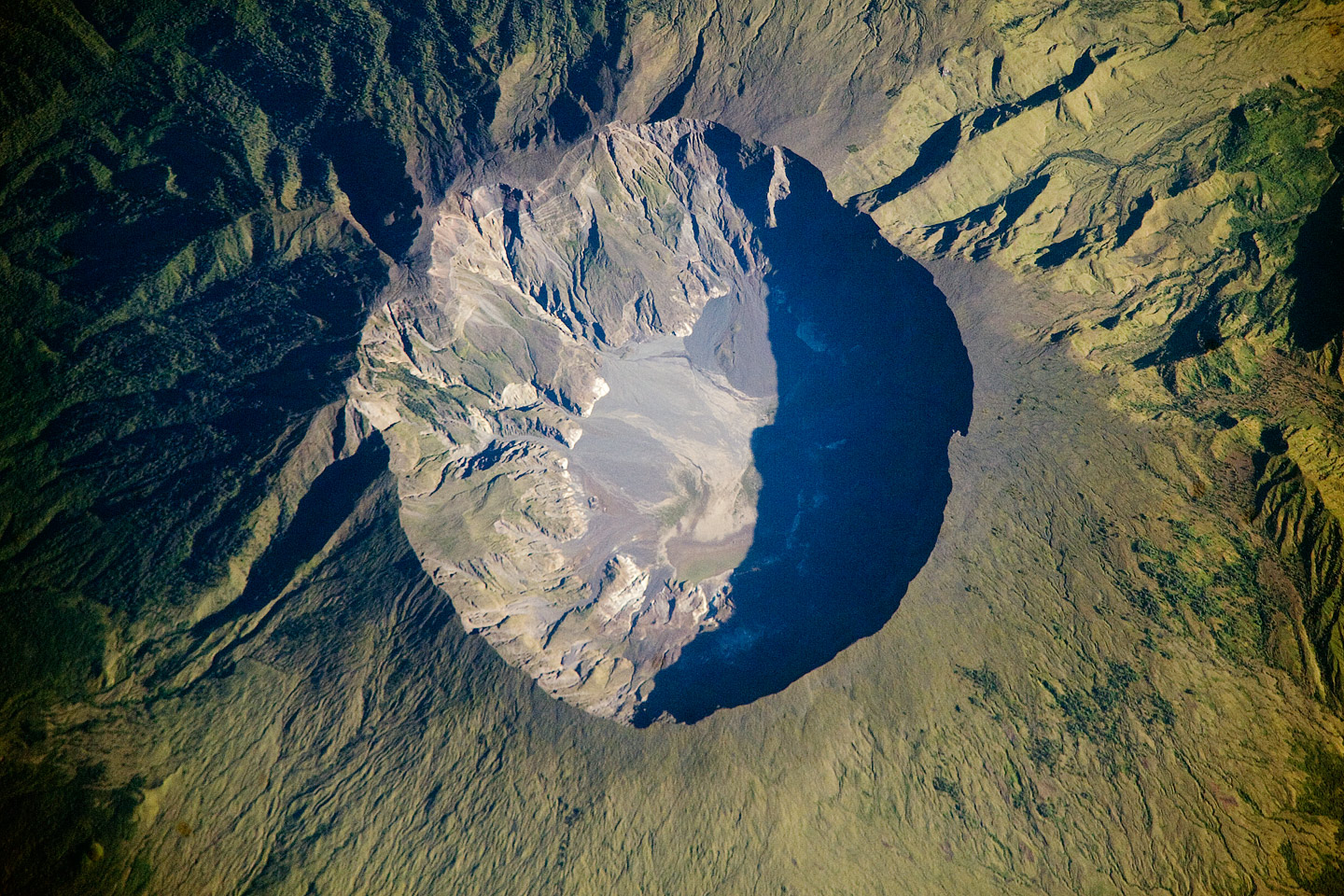

Ashes to ashes: How the Tamboro volcano eruption wreaked havoc on Europe's weather
Six months after the end of the Eyjafjallajökull volcano eruption, we look back almost 200 years to examine how ash from the biggest volcanic eruption in recorded history played havoc with the weather, with utterly devastating effects
This an extract from the launch issue of theWeather magazine. Join theWeather Club to read the whole article. The Winter issue of theWeather is out now.
In 2010, we all briefly became experts on volcanic ash. After the Icelandic volcano Eyjafjallajökull erupted on 20th March, the ash cloud that drifted down over the UK and across the Continent caused flights to be grounded, vegetable stocks to run low and footballers – horror of horrors – to travel to games by coach. Experts popped up on our screens to describe the chemical and geological properties of volcanic debris and the vagaries of wind patterns. For a while at least, volcanic ash was big, big news.
In historical terms, though, the damage caused by the eruption was relatively insubstantial – Eyjafjallajokull caused a few business meetings to be missed, a few holidays to be spoiled and few newsreaders to teeter on the edge of madness in their endeavors to correctly pronounce its name. But nobody died. Tamboro, a volcano on the Indonesian island of Sumbawa, which erupted in April 1815, was a different matter altogether. Comparing the Icelandic volcano with Tamboro would be like comparing a belch with a carbomb. Eyjafjallajökull disrupted flights; Tamboro, and the ash it ejected, changed everything. Including the weather.
Tamboro had previously been considered extinct, so its eruption came as a surprise. Sir Stamford Raffles, a British lieutenant governor of Java with a name seemingly straight from an Ian Fleming novel, described in his memoirs how, on the evening of Wednesday 5th April 1815, the first rumbles were heard from the mountain: ""The noise was, in the first instance, almost universally attributed to distant cannon; so much so that a detachment of troops were marched from Djakarta in expectation that a neighbouring post was attacked.""
Five days later, after an eerie lull in activity, the volcano blew itself into oblivion – the largest and deadliest volcanic eruption in recorded history. An eye-witness, the Rajah of Sanggir, told a British official: ""In a short time, the whole mountain appeared like a body of liquid fire, extending itself in every direction. The fire and columns of flame continued to rage with unabated fury until the darkness caused by the quantity of falling matter obscured it."" Any villages that were spared the deadly lava flow were soon ripped apart by the violent whirlwinds and four metre tsunami that rapidly followed.
The explosion of Tamboro was of sufficient power to be heard 2,600km away by the garrison at Fort Marlborough, Sumatra, although local chiefs quickly established that the noise was that of ""a contest between Jin (the very devil), with some of his awkward squad, and the manes of their departed ancestors, who had passed their period of probation in the mountain and were in progress towards paradise."" In many parts of the region, the sound was mistaken for cannon fire. The noise of panicked armies being hurriedly mobilised across the Pacific must have traveled almost as far as that of the eruption.
The devastation wrought by Tamboro upon Indonesia was brutal in the extreme. Tens of thousands lost their lives, either directly from the eruption or later from starvation or disease, and the region's economies were ripped to shreds, meaning that those who survived faced an existence of terrible hardship. The horror, death and desperate privation triggered by the events of 1815 still run like sore through Javanese culture and folklore. But that's not where the story ends - although few people realised it at the time, Tamboro's impact would be felt far away from the Pacific, with similarly devastating effect.
When Tamboro exploded on 10th April, a vast quantity of solid matter, estimated by geologist Richard B Stothers to be in the region of 150 cubic kilometers, was punched into the stratosphere over the course of just a few hours. This volcanic ash spread slowly but relentlessly around the globe. By the end of 1815, Europe and North America were experiencing streaky skies, long twilights and extraordinary red sunsets – some of which were recorded in stunning detail by the British artist JMW Turner. Scientists at the French Academy of Science and the British Museum reported unprecedented dust loads. Hungary experienced a blizzard of brown snow, while in April 1816 Maryland was covered in a blanket of snow variously reported as brown, red or blue-ish. Taranto in southern Italy very rarely sees even a single flake of snow, so the flurry of red and yellow snow that fell in early 1816 must have deluded many younger residents as to the kaleidoscopic nature of northern winters.
While most volcanic debris falls back to earth relatively quickly, or is washed down by rain and snow, fine particles of ash can remain in the atmosphere in significant concentrations for two or three years. If there is enough of it, this dust, suspended in the upper atmosphere, can act like a giant parasol – absorbing, scattering and reflecting back the sun's radiation, while allowing the longer-wave radiation reflected by the earth to escape - a process known as the 'reverse greenhouse effect'.
Pyrheliometric observations, which were introduced after the eruption of Krakatoa in 1883, show that after major volcano events, the monthly average of direct solar radiation can fall in some regions by as much as 20-22 per cent compared to the mean, with substantial effects still being observed up to three years later. Tamboro, it appears, was no exception. According to climate historian HH Lamb, the dust created by the 1815 explosion ""spread into a world-wide veil, reducing the penetration of the sun's rays, cooling the Earth and distorting the global wind circulation pattern"".
The dramatic impact of this cooling on Europe and the United States meant that 1816 has gone down in history as ""the year without a summer"". The consequences were vast. Examination of tree-ring data has suggested that 1816 saw the second coldest northern hemisphere summer of the past six centuries, with only 1601, the year after the eruption of Huaynaputina in Peru, proving colder.
Chester Dewey, a maths professor at Williams College in Massachusets, kept a weather log throughout that summer. On 6th June, he wrote, it snowed ""several times"". On 7th June ""moist earth was frozen half and inch thick"". By the end of June, with nighttime temperatures falling as low as 2C, ""the trees on the sides of the hills presented for miles the appearance of having been scorched"". The frosts continued throughout July and August, destroying Williamstown's cucumber and Indian corn crops. Connecticut resident Chauncey Jerome wrote in his diary: ""I well remember the 7th of June, dressed throughout with thick woolen clothes and an overcoat on. My hands got so cold that I was obliged to lay down my tools and put on a pair of mittens.""
The UK fared little better. In the Midlands, for example, 1816 registered the lowest mean July temperature for the entire period 1698-1952. Much of the rest of Europe shivered through an uncommonly cold summer, with the Paris Observatory recording a seasonal deviation of -3C from the mean. Throughout the summer, Europe was also blighted by heavy rain, hail and even snow. In July, the Norfolk Chronicle wrote: ""Melancholy accounts have been received from all parts of the Continent of the unusual wetness of the season; property in consequence swept away by inundation and irretrievable injuries done to the vineyards and corn crops."" Almost 13 inches of rain fell on Düsseldorf in June, July and August, while the yearbook for 1816 in the German kingdom of Württemberg recorded that ""every storm of the past summer was followed by the most severe cold, so that it regularly felt like November, and no month went by in which many houses were not heated.""
In July 1816, The Times wrote: ""Should the present wet weather continue, the corn will inevitably be laid, and the effects of such a calamity and at such a time cannot be otherwise than ruinous to the farmers, and even to the people at large.""
It was a prescient warning. With the Napoleonic wars barely over and Europe struggling to recover from the impact of 25 years of conflict, the continent was something of an economic basketcase, still dangerously reliant upon subsistence farming to feed its people. As harvest after harvest failed in the teeth of the cold, wet weather, grain prices soared and people all over Europe began to starve.
JD Post, in his book The Last Great Subsistence Crisis In The Western World, calculates that by 1817 grain prices around Europe were twice as high on average than they had been in 1815. With wages stagnant, economies depressed and demobbed soldiers struggling to find employment, the consequences of this price inflation could be felt in homes across the continent, with millions of people finding themselves suddenly unable to afford bread. The Habsburg emperor wrote to his chancellor, Metternich, telling him that ""in Gorizia their distress had become so severe that the population was reduced to a diet of lettuce and soup made from herbs, and on very many days had nothing to eat at all"".
Europe's aristocratic rulers, either unwilling or unable to react, were confronted by serious popular unrest. In England, the poor took to the streets. As early as May 1816, 1,500 East Anglian rioters armed with spiked sticks roamed the county carrying a flag proclaiming ""bread or blood"", smashing up buildings and looting mills. In the autumn, another dreadful harvest led to riots across the north of England. With the mob largely ignorant of the nuances of meteorology and macroeconomics, many a local baker took a brutal and somewhat unjustified beating.
Across the Channel, the French – historically never shy of a touch of civil unrest – followed suit, with a major insurrection in Toulouse in November. National stereotypes were similarly maintained in Switzerland – one of the worst-hit parts of Europe – where the famine-struck populace died in their thousands with barely a hint of disorder.
With the cold, damp and poverty came typhus. The disease raged across the continent, with one contemporary estimate suggesting that in Ireland alone 800,000 people were infected by the disease. Another major outbreak hit silkworkers in the Spitalfields district of London. Ergotism – a horrible form of poisoning caused by eating damp grain – reared its ugly head, as did scurvy, caused by a lack of vitamin C.
One consequence of all this death, misery and relentless drizzle was a huge wave of emigration. It is estimated that 50,000 people – 5 per cent of the population – attempted to leave the German state of Baden in 1816, and by May 1817 around 30,000 Germans, Swiss and Alsatians were stranded in Amsterdam, trying to catch boats to the United States.
The fortunate minority that managed to catch an Atlantic crossing would have felt a touch less lucky upon their arrival in the New World. New England, as we have seen, was no less barren and miserable, and was itself undergoing a major population shift as farmers fled the dreadful growing conditions, feeding the burgeoning westward exodus. According to one Connecticut observer, ""in the pressure of adversity, many persons lost their judgement, and thousands feared or felt that New England was destined, henceforth, to become part of the frigid zone. At the same time Ohio – with its rich soil, its mild climate, its inviting prairies – was opened fully upon the alarmed and anxious vision. As was natural under the circumstances, a sort of stampede took place from cold, desolate, worn-out New England to this land of promise."" Other social and economic factors fed this migration, just as other factors aided the collapse of Europe's economies and the ravages of starvation and infectious disease, but the impact on the weather of the Tamboro dust figured high on the list of culprits.
The 'year without a summer' was a horrible time to be alive in most of Europe and the United States. Conditions slowly improved over the following few years, with better harvests and falling grain prices, but the privations caused by the volcanic ash lingered on. Without wishing to sound too portentous, it isn't hard to view the events of 1816 as an indicator of just how much havoc can be wreaked by subtle changes to our climate. The title to JD Post's book about the crisis might one day need changing - just because there hasn't been a great subsistence crisis in the Western world since 1816, that doesn't necessarily mean that it's going to be the last.
"




